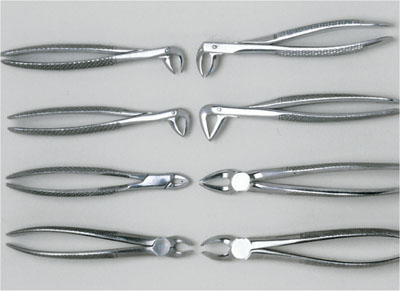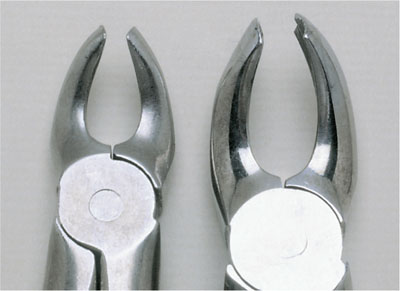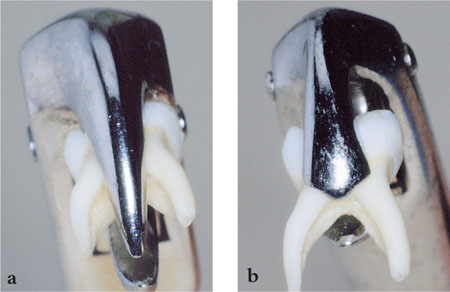Chapter 5
Extraction of Teeth and Roots
Aim
This chapter aims to describe the techniques and instruments that can be employed in order to extract teeth and roots.
Outcome
After reading this chapter you should understand the principles of tooth and root removal.
Introduction
The extraction of teeth is a commonly performed operation that can be a simple task. It may however rely on a high degree of skill to be accomplished successfully in all cases. Success depends on understanding both the morphology of teeth, or more exactly their roots, and the anatomy of the supporting tissues and associated structures, together with the vascular and nerve supply. Careless technique can create problems for future replacement of missing teeth (chapter 9). Advances in dental care and a more elderly population have resulted in patients maintaining teeth until the elastic qualities of their support are all but exhausted. This creates special management problems for the performance of minor oral surgery.
In this chapter the basics of tooth extraction will be explored, although it is likely that most dentists will already have skills in this area.
Tooth Morphology
The following aspects of tooth morphology are important:
-
number of roots
-
shape of roots
-
diversity of form
-
proximity to important structures.
It is essential to be familiar with the morphology of the teeth to better understand the way in which forces applied to them will achieve their removal. In addition, it is essential to appreciate the diversity of the morphology in certain teeth. This is particularly the case with third molars and upper premolars. Finally, the proximity of roots of teeth to vital structures such as the inferior alveolar nerve and the maxillary antrum should always be remembered to avoid inadvertent iatrogenic damage.
Forceps
The following aspects of extraction forceps are important:
-
the design of the beaks
-
the fit to root surfaces
-
the handles should give ergonomic grip
-
the efficient delivery of force.
The ideal way to apply force to a tooth would be with ‘steel fingers’. This would allow the ultimate proprioceptive feedback from the site of the extraction to the clinician. Forceps should be considered as the next best thing. They are designed to achieve the delivery of force to the tooth in the most ergonomic way possible. There are a number of different designs (Fig 5-1). For example, there are differences between those forceps designed for the removal of permanent teeth and those used to extract deciduous teeth (Fig 5-2). In addition, when removing adult lower molar teeth two distinct patterns of beak are available. In the standard lower molar forceps there are two pointed beaks that engage the roots in the bifurcation area. Force is then applied in a buccal direction to deliver the tooth (see below). In the cowhorn design the pointed beaks are designed to slide below the furcation and deliver the tooth in a vertical direction as the forceps beaks approximate (Fig 5-3a). Such deeply plunging beaks should not be used on deciduous teeth as they may damage the underlying permanent tooth, and smaller deciduous lower molar forceps should be employed (Fig 5-3b). Practitioners will develop particular choices for any given situation. In general forceps apply forces to the tooth, which in turn expands the alveolar bone and ruptures the periodontal ligament to allow removal.

Fig 5-1 The various designs of dental extraction forceps. Those designed for the deciduous dentition are shown on the left, those for permanent teeth on the right.

Fig 5-2 A comparison of the size of beaks in upper deciduous molar (left) and upper permanent molar (right) forceps.

Fig 5-3 (a) The cowhorn design should not be used on deciduous teeth as da/>
Stay updated, free dental videos. Join our Telegram channel

VIDEdental - Online dental courses


